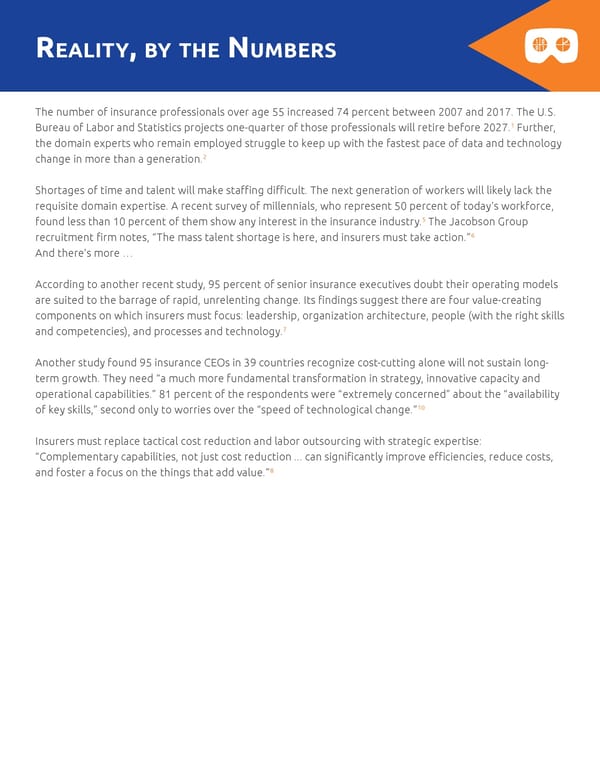realIty, by the numbers The number of insurance professionals over age 55 increased 74 percent between 2007 and 2017. The U.S. 1 Further, Bureau of Labor and Statistics projects one-quarter of those professionals will retire before 2027. the domain experts who remain employed struggle to keep up with the fastest pace of data and technology 2 change in more than a generation. Shortages of time and talent will make staffing difficult. The next generation of workers will likely lack the requisite domain expertise. A recent survey of millennials, who represent 50 percent of today’s workforce, 5 The Jacobson Group found less than 10 percent of them show any interest in the insurance industry. 6 recruitment firm notes, “The mass talent shortage is here, and insurers must take action.” And there’s more … According to another recent study, 95 percent of senior insurance executives doubt their operating models are suited to the barrage of rapid, unrelenting change. Its findings suggest there are four value-creating components on which insurers must focus: leadership, organization architecture, people (with the right skills 7 and competencies), and processes and technology. Another study found 95 insurance CEOs in 39 countries recognize cost-cutting alone will not sustain long- term growth. They need “a much more fundamental transformation in strategy, innovative capacity and operational capabilities.” 81 percent of the respondents were “extremely concerned” about the “availability 10 of key skills,” second only to worries over the “speed of technological change.” Insurers must replace tactical cost reduction and labor outsourcing with strategic expertise: “Complementary capabilities, not just cost reduction ... can significantly improve efficiencies, reduce costs, 8 and foster a focus on the things that add value.” SOS: THE NEW OPERATING MODEL
 The New Operating Model Page 2 Page 4
The New Operating Model Page 2 Page 4